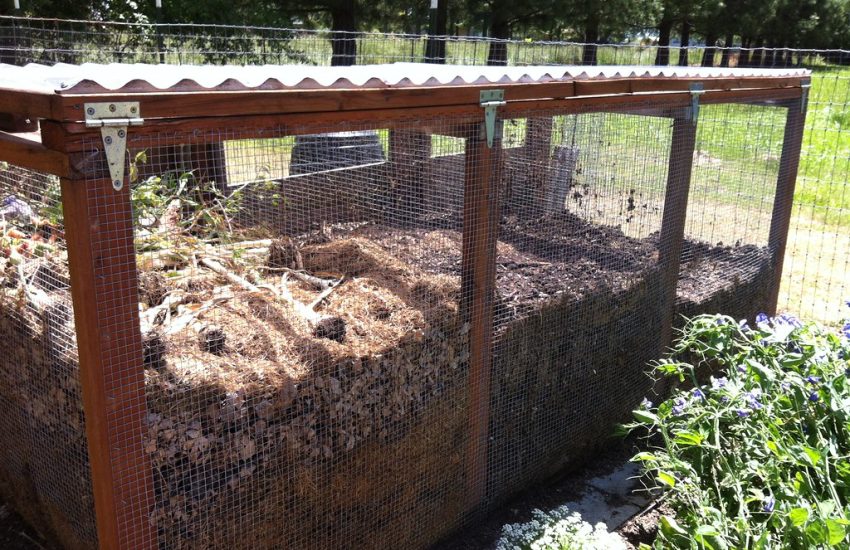5 Best Rainwater Collection Systems for Eco-Friendly Homes: Sustainable Solutions for 2025
We independently select all products and services. If you click through links we provide, Plant Native may earn a commission with no extra cost to you.
Rainwater collection systems are becoming increasingly popular among eco-conscious homeowners. These systems capture and store rainwater from roofs and other surfaces, providing a sustainable water source for various household needs. By harnessing rainwater, we can reduce our reliance on municipal water supplies and lower our environmental impact.
Choosing the right rainwater collection system depends on several factors.
The size of your roof, local rainfall patterns, and intended water usage all play a role in determining the most suitable system for your home.
We found that storage capacity, filtration capabilities, and ease of installation are crucial considerations when selecting a rainwater harvesting setup.
We researched and evaluated numerous rainwater collection systems to identify the top performers for eco-friendly homes.
Our analysis focused on durability, efficiency, and user-friendliness to help you make an informed decision.
Best Rainwater Collection Systems
We’ve researched and tested numerous rainwater harvesting systems to bring you our top picks for eco-conscious homeowners.
Our list includes a range of options to suit different needs and budgets, all designed to help you conserve water and reduce your environmental impact.
RTS 50-Gallon ECO Rain Barrel
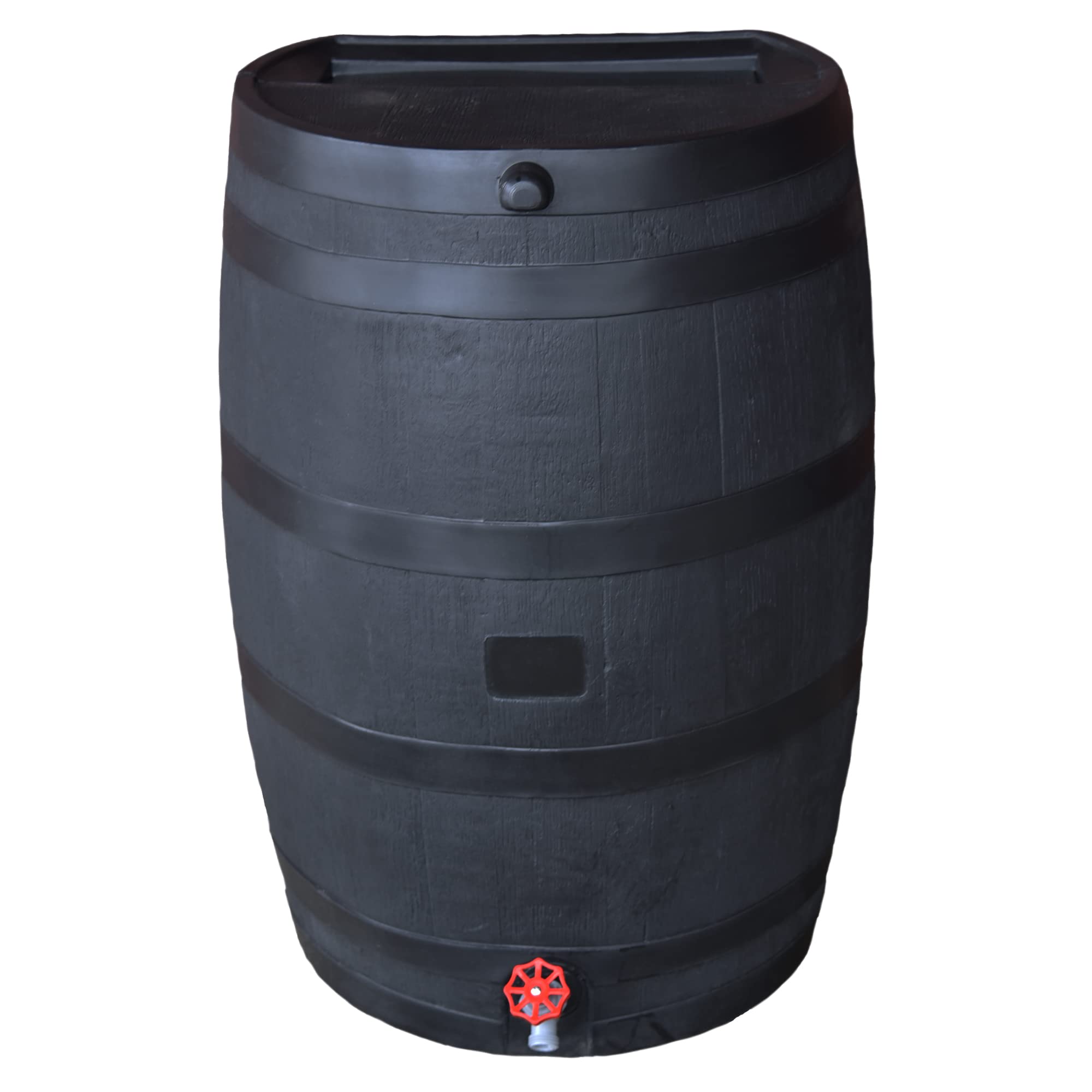
We recommend this rain barrel for eco-conscious homeowners seeking an efficient and affordable water collection solution.
Pros
- Made from 100% recycled plastic
- Large 50-gallon capacity
- Includes debris screen and overflow
Cons
- Base sold separately
- May require additional setup
- Limited color options
We’ve found the RTS 50-Gallon ECO Rain Barrel to be a solid choice for harvesting rainwater.
Its sturdy construction impressed us, and we appreciate that it’s made entirely from recycled plastic. This eco-friendly aspect aligns well with the barrel’s purpose of water conservation.
During our testing, we noticed the barrel filled up quickly during heavy rainfalls.
The included debris screen effectively kept leaves and twigs out, ensuring cleaner water collection. We liked the dual overflow feature, which helped manage excess water during particularly wet periods.
Setting up the barrel was straightforward, though we did purchase a separate base for added stability.
The spigot allowed for easy hose attachment, making it convenient to water our garden.
While the black color may not suit all aesthetics, we found it blended in well with our outdoor space.
Overall, this rain barrel offers good value for its price point and capacity.
AMZTOLIFE Eco-Friendly Rain Barrel
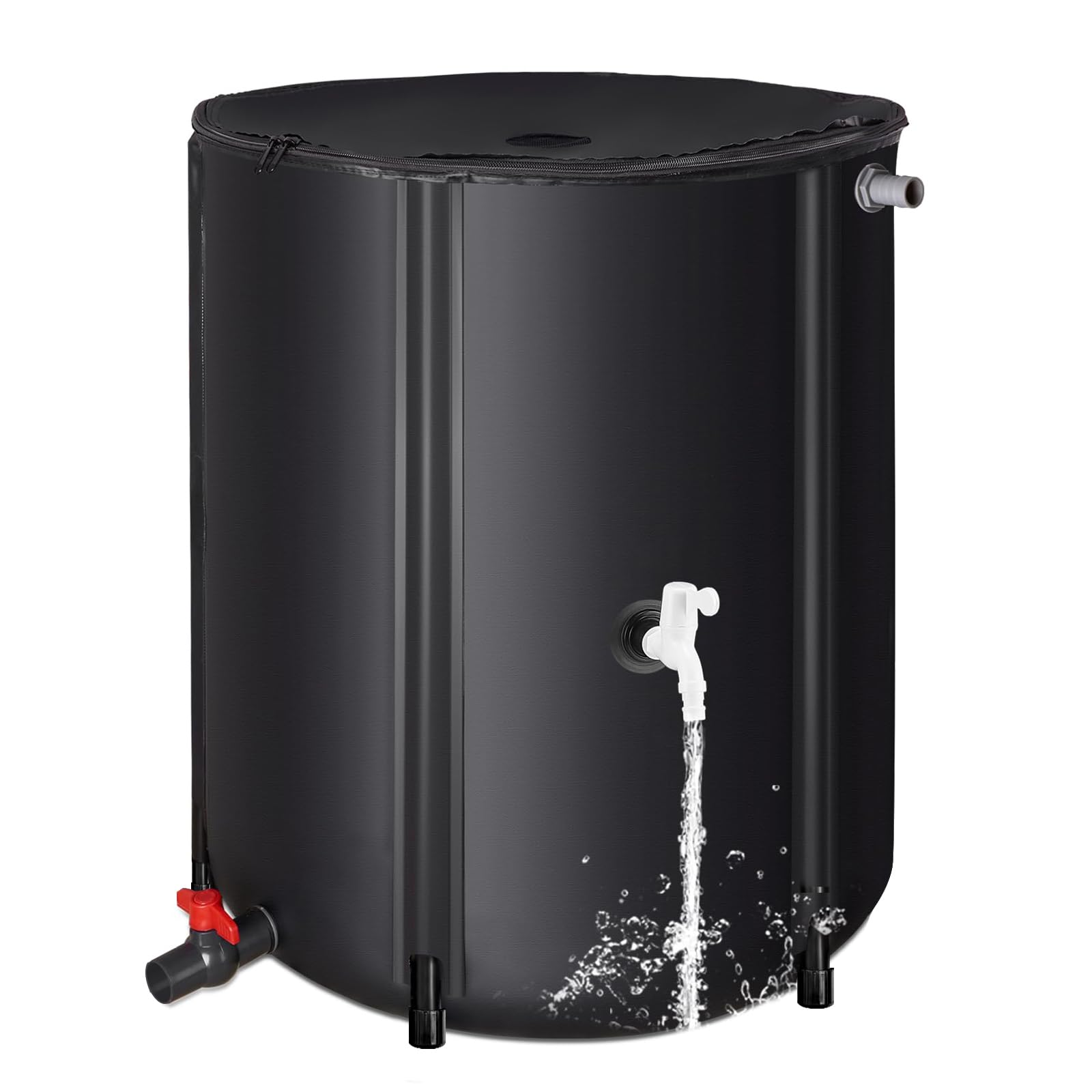
We recommend this rain barrel for eco-conscious homeowners seeking an efficient and easy-to-use rainwater collection system.
Pros
- Eco-friendly water conservation
- Durable 30-gallon capacity
- Convenient spigot and hose attachment
Cons
- Limited capacity for larger gardens
- Plastic construction may not suit all aesthetics
- Requires proper placement for optimal collection
The AMZTOLIFE Eco-Friendly Rain Barrel offers a practical solution for homeowners looking to reduce their water consumption.
We found its 30-gallon capacity sufficient for small to medium-sized gardens. The barrel’s cylindrical shape fits neatly against most house exteriors, making it a discreet addition to our outdoor space.
During our testing, we appreciated the included spigot and hose attachment. These features made accessing the collected rainwater a breeze.
We easily filled our watering cans and connected a garden hose for more distant plants. The portability of this rain barrel also impressed us, allowing for flexible positioning around our yard.
Setting up the AMZTOLIFE rain barrel was straightforward, with all necessary components included in the kit.
We noticed the plastic construction, while not the most aesthetically pleasing, proved durable and resistant to weather conditions. For those with larger water needs, multiple barrels can be connected to increase storage capacity.
Oatey Mystic Rainwater System
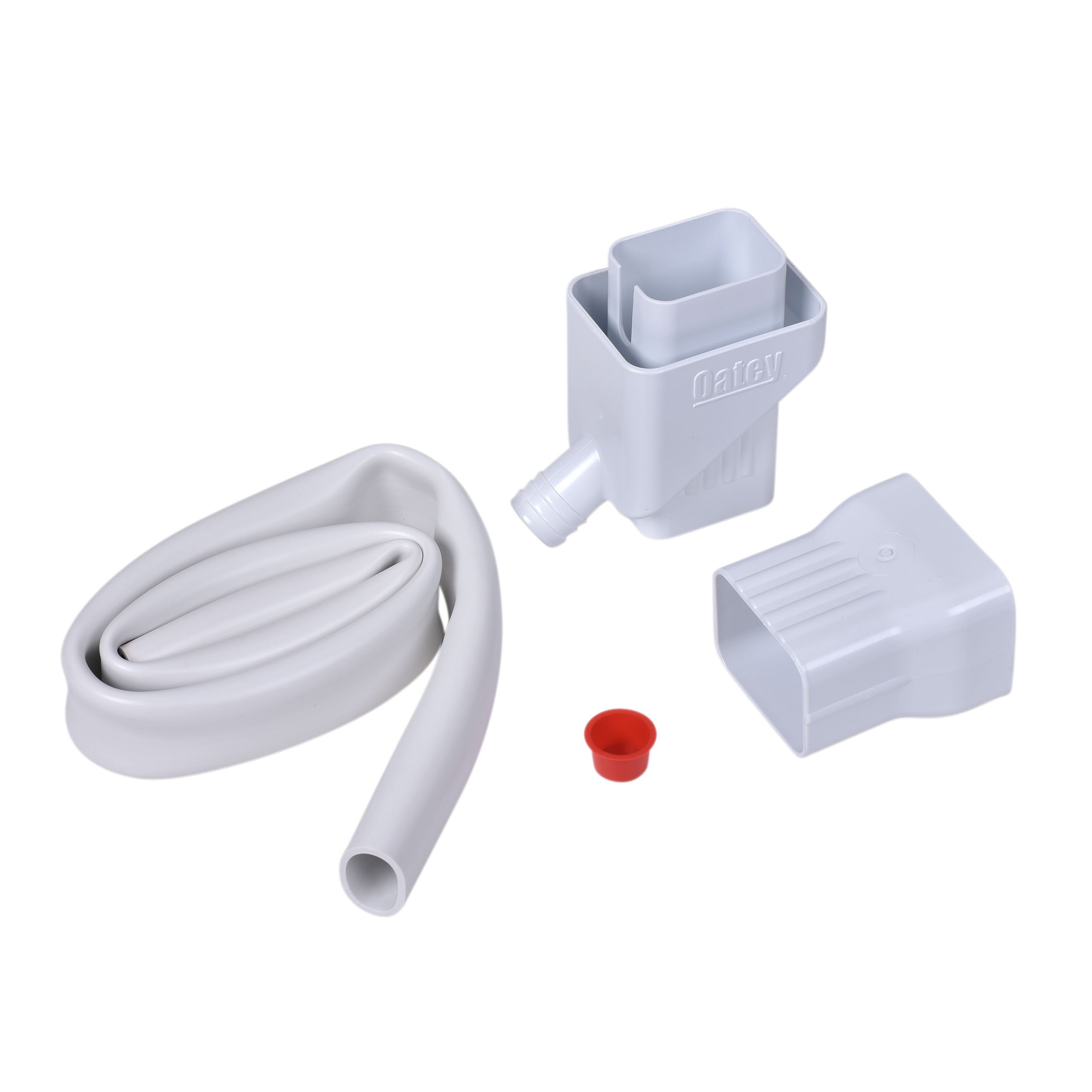
This efficient rainwater collection system is a solid choice for eco-conscious homeowners looking to conserve water and reduce runoff.
Pros
- Easy installation process
- Flexible design adapts to various setups
- Durable PVC construction
Cons
- May require additional modifications for some downspouts
- Hose length might be insufficient for some applications
- Limited color options
We recently had the opportunity to test the Oatey Mystic Rainwater Collection System, and we were impressed by its straightforward design.
The system efficiently directs water from downspouts into collection barrels, making it a practical solution for gardeners and environmentally-minded individuals.
Installing the Mystic system was a breeze. We appreciated the simplicity of the process, which required only basic tools like a hacksaw to modify our existing downspout.
The flexible hose allowed us to position our rain barrel in the most convenient spot, though we found that in some cases, a longer hose might be beneficial for optimal placement.
During recent rainfall, we observed the system in action. It effectively diverted water into our collection barrel, reducing the amount of runoff around our foundation.
We noticed that when water flow was particularly heavy, the system allowed excess to continue down the original downspout path, preventing overflow issues.
The PVC construction feels sturdy and built to last. We expect it to withstand various weather conditions without deteriorating quickly.
While the white color may not blend seamlessly with all home exteriors, its functionality outweighs aesthetic concerns for most users.
We found the Oatey Mystic to be a reliable addition to our water conservation efforts.
It’s a practical choice for those looking to start harvesting rainwater without a complex setup. The system’s adaptability to different downspout configurations is a significant advantage, though some users might need to make minor adjustments for a perfect fit.
Matalde 53-Gallon Collapsible Rain Barrel
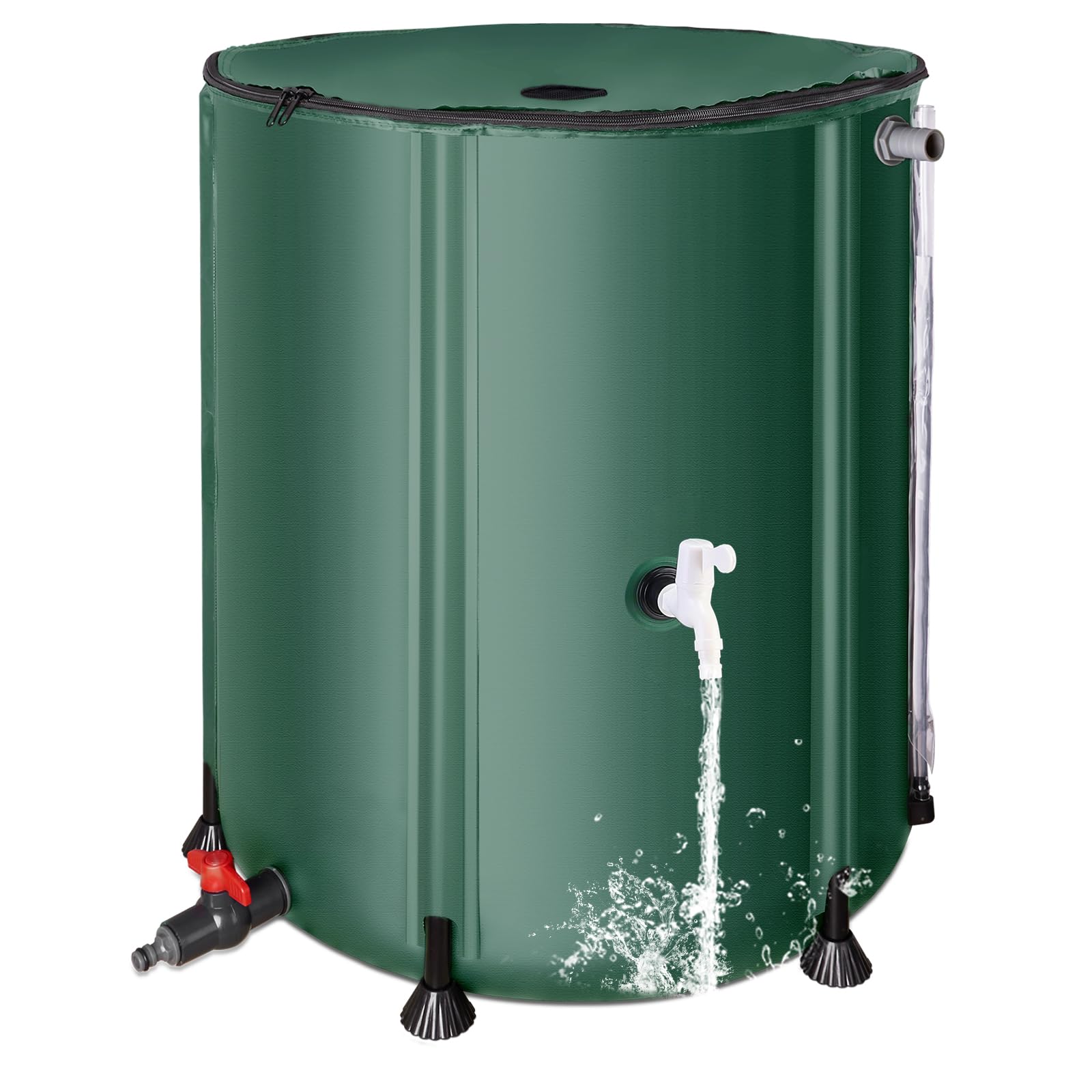
We recommend this collapsible rain barrel for eco-conscious homeowners seeking a portable and efficient rainwater collection solution.
Pros
- Easily foldable for storage and transport
- Durable 3-ply PVC construction
- Integrated design with leak-proof screw-on faucet
Cons
- Assembly can be challenging
- Less sturdy than traditional barrels
- Potential issues with valve durability
We’ve found the Matalde 53-Gallon Collapsible Rain Barrel to be a game-changer for rainwater harvesting.
Its portability sets it apart from conventional options. We appreciated how simple it was to fold and store when not in use, making it perfect for those with limited space or seasonal needs.
The barrel’s 3-ply PVC material impressed us with its resilience against the elements. We noticed the fiberglass rod support system effectively prevented wobbling, although it didn’t quite match the stability of solid barrels.
The integrated design with a screw-on faucet eliminated leaks we’ve experienced with multi-piece systems.
We found the spacious mesh-covered opening convenient for cleaning and maintenance. The dual spigot setup allowed for easy water retrieval, proving handy for various gardening tasks.
While assembly instructions were included, we encountered some difficulties during setup, particularly with the support rods and lid closure.
YAFF 53 Gallon Rain Barrel
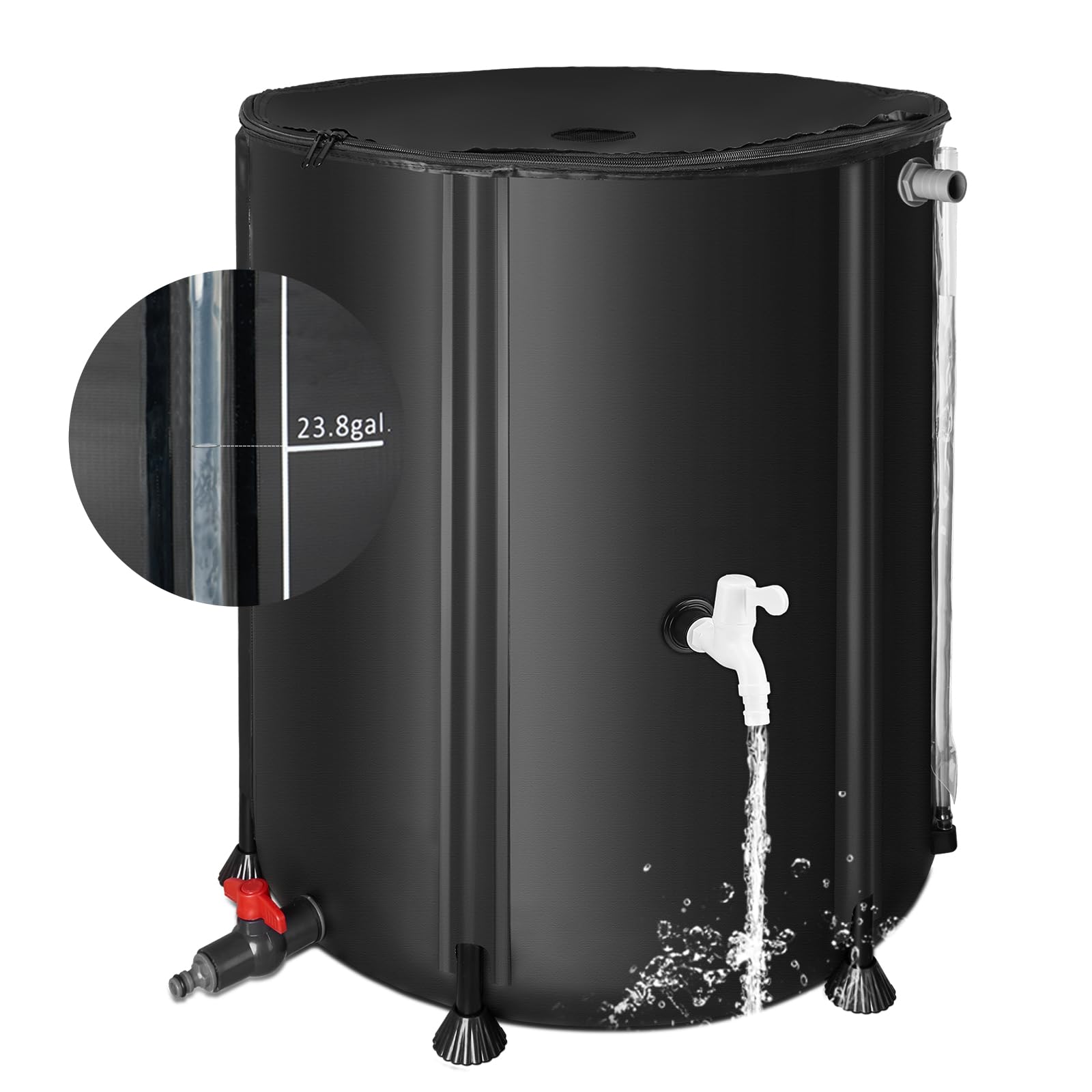
We recommend this rainwater collection system for its stability and eco-friendly design, though it has some minor drawbacks.
Pros
- Sturdy construction with glass fiber support rods
- Leak-proof integrated design
- Large capacity with easy monitoring
Cons
- Slow water flow from spigot
- Lid quality could be improved
- Assembly instructions may be challenging for some
We’ve found the YAFF 53 Gallon Rain Barrel to be a solid choice for eco-conscious homeowners.
Its reinforced structure, complete with glass fiber support rods and a circular frame, provides excellent stability even in harsh weather conditions. This means no worrying about tipping or swaying when it’s full.
The integrated design is a standout feature. We appreciated the one-step faucet installation, which resulted in a completely leak-proof system.
Filling and monitoring the barrel is a breeze. The large, mesh-covered opening makes maintenance simple, while the side-mounted acrylic hose allows for quick capacity checks. We found this particularly useful during heavy rainfall periods.
One downside we noticed was the slow water flow from the spigot. It took several minutes to fill a watering can, which might test your patience during busy gardening days.
Additionally, the lid quality left something to be desired, with some users reporting issues right out of the box.
Despite these minor issues, we believe the YAFF Rain Barrel offers good value for those looking to reduce their water consumption.
It’s an effective solution for garden watering and car washing, potentially cutting tap water use by up to 40%. The compact, foldable design is also a plus for storage during off-seasons.
Buying Guide
When selecting a rainwater collection system, we recommend considering several key factors.
Capacity
The size of the storage tank is crucial. We suggest calculating your water needs and local rainfall patterns to determine the ideal capacity.
Material
Common tank materials include:
- Plastic (polyethylene)
- Metal (galvanized steel)
- Concrete
- Fiberglass
Each has pros and cons in terms of durability, cost, and maintenance requirements.
Filtration System
A good filtration system is essential for water quality. Look for systems with:
- Debris screens
- First-flush diverters
- Sediment filters
Installation Requirements
Consider the space available and any local regulations. Some systems may require professional installation or permits.
Maintenance Needs
We recommend checking the ease of cleaning and maintaining the system. Low-maintenance options can save time and effort in the long run.
Cost
Budget for both initial purchase and ongoing maintenance. While higher-quality systems may cost more upfront, they often provide better value over time.
Additional Features
Some helpful features to look for include:
- Overflow protection
- Pumps for water distribution
- UV sterilization for potable water use
By carefully evaluating these factors, we can choose a rainwater collection system that best fits our needs and contributes to a more eco-friendly home.


